Taiwan has worked hard over the last decade to promote itself as a tourism destination, but has long had difficulty competing with its near neighbors such as Thailand, China and Malaysia. The effort has had some impact, with inbound tourism numbers rising from 2.25 million in 2003 to 7.3 million last year, according to statistics from Taiwan’s Tourism Bureau. What needs to be noted, however, is how small a proportion of this increase is from Western nations. Mark Sinclair, a 20-year resident of Taiwan, has launched a new Web site, Life of Taiwan (www.lifeoftaiwan.com), to provide easily accessible information and offering the kind of support network that he believes Western tourists require when visiting the country.
The Web site, with its gorgeous photography by Michelin and Asian Geographic photographer Rich Matheson and text by Steven Crook, a writer with vast experience of Taiwan and the author of Taiwan: The Bradt Travel Guide, provides an easy-to-access platform for those who want to know something about Taiwan and what it has to offer as a tourism destination. Sinclair’s aim is to provide high-end customized tours for tourists catering to their specific interests and giving them access to a wide range of tourism resources that currently are not readily available to short-term visitors. Sinclair particularly mentioned Taiwan’s magnificent mountain environment, which he said rivals anything in Asia. While visitors might be able to take a tour of the scenic spots of Taroko Gorge, the beauty and challenges of Taiwan’s high mountain trails require the kind of infrastructure that is currently absent from Taiwan’s tourism establishment.
Brain storming

Photo Courtesy of Rich Matheson
Sinclair drew upon his own needs and experiences to design the Web site. “[W]hen I arrived in 1989, then came back again in 1994, in Tainan (where Sinclair is based) it was so difficult as a traveler to get any information about where to go or what to do. To a large extent it is still true today. For international arrivals there is very scant information about Taiwan, and for traveling in Taiwan. What there is is not very well presented and doesn’t offer a depth of knowledge,” Sinclair said. Bringing together Matheson and Crook, who are both long-term residents of Taiwan with a broad knowledge and understanding of its culture, he believes that Life of Taiwan will be able to present a different perspective on Taiwan’s appeal than is available through local tourism sources.
Sinclair, whose own background is in Web site development, saw the potential after working on a Web project for the Chateau Beach Resort (夏都沙灘酒店) in Kenting to handle their overseas bookings. He said that many people would write and say how relieved they were to have an English voice at the end of the phone.
“As long-term residents we sometimes take it for granted how easy it is to get around Taiwan, but for people coming from afar, it makes them feel more comfortable to have someone they can talk to. That’s when I felt I could do this on a larger scale and arrange tours for people when they came, for god knows, people need help, right? Especially if you are coming with a family. How do you get baby chairs in a car? How can you get these sorts of details organized?”
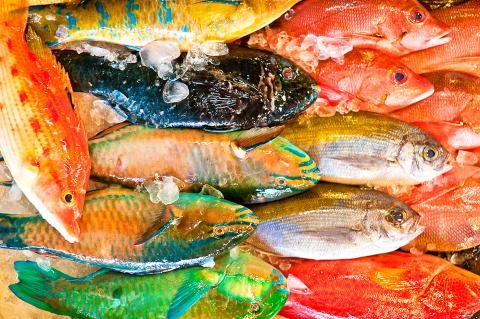
Photo Courtesy of Rich Matheson
Sinclair will operate these services in cooperation with local travel service provider Edison Tours (宏祥旅行社).
“We will be plugging ourselves into Edison, and we will be more like a consultant. We are set up as a booking engine, not a travel agent.”
Taiwan has been remarkably successful at promoting tourism overall, but a breakdown of figures shows that the increase is primarily a result of tourism from China.

Photo Courtesy of Rich Matheson
Growth in this sector has been almost exponential, rising from 329,204 in 2008 to 2.58 million last year. Tourism from Europe was just 218,245 last year, only a marginal increase over the same period (200,914 in 2008). Sinclair puts this down to a failure of marketing efforts directed at Western tourists, as well as the lack of convenience compared to locations such as Thailand and Malaysia, where services for Western tourists are much more proactive.
Room for improvement
Crook said in an e-mail interview that the tourism environment for Western tourists had improved immeasurably since he started writing about Taiwan in 1996.
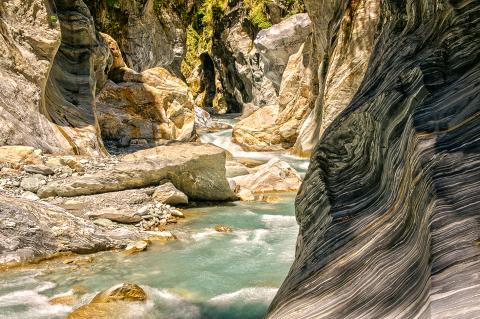
Photo Courtesy of Rich Matheson
“I don’t only mean bilingual signs and leaflets, and people in visitor information centers who can answer questions in English. I mean the general attitude (both in officialdom and in private-sector entities) toward backpackers, cyclists, hikers, eco-tourists, everyone who isn’t traveling in the ‘traditional’ tour-group-with-lots-of-shopping-and-eating manner. The industry as a whole is a lot more broad-minded than it used to be,” he said.
He added that “Taiwan is still way behind Thailand, Indonesia and Nepal when it comes to tourism outfits run by foreigners and specifically tailored to the needs of foreign visitors.” It is just these sorts of services that Sinclair believes could draw a wider range of guests eager for new experiences.
Sinclair said that he hoped that through Life of Taiwan he would be able to give back something to Taiwan for all the opportunities and experiences it has given him over more than two decades as a resident here. He feels that Taiwan’s tourism authorities do not fully understand what it is Western visitors are looking for in a destination. “They have used domestic thinking and imagery and cuteness, and have not really grasped what an international tourist is looking for… For the domestic market, the infrastructure is very well developed, but for international guests (looking beyond the basics), it is almost impossible to navigate (on their own). There is still not enough thinking about the internationalization of the tourism environment.”
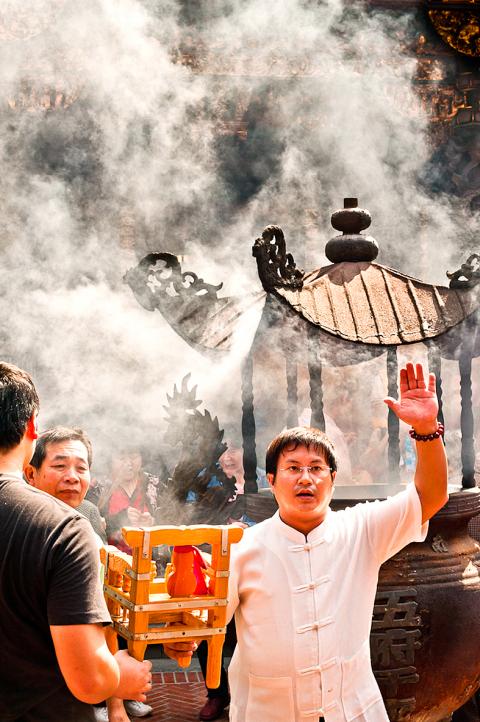
Photo Courtesy of Rich Matheson
Sinclair said that while Life of Taiwan is a commercial venture, it was also a call to action “to make Taiwan, its unique people and culture, more accessible to international visitors.” It is an effort to provide the information about Taiwan to incentivize more Western tourists to visit. In addition, further writing by Crook, who is currently updating his Bradt guide for publication in spring 2014, can be found at crooksteven.blogspot.com.
A huge library of images of Taiwan, photographed by Matheson, can be seen at www.thetaiwanphotographer.com. The Web site organizers can be reached at contact@lifeoftaiwan.com
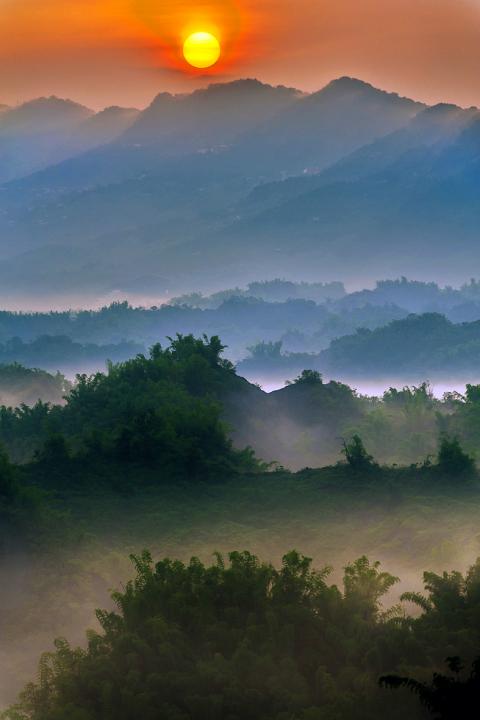
Photo Courtesy of Rich Matheson
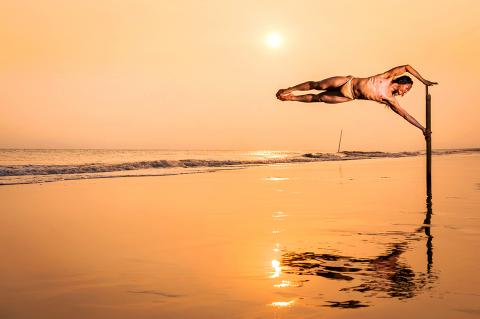
Photo Courtesy of Rich Matheson

In the March 9 edition of the Taipei Times a piece by Ninon Godefroy ran with the headine “The quiet, gentle rhythm of Taiwan.” It started with the line “Taiwan is a small, humble place. There is no Eiffel Tower, no pyramids — no singular attraction that draws the world’s attention.” I laughed out loud at that. This was out of no disrespect for the author or the piece, which made some interesting analogies and good points about how both Din Tai Fung’s and Taiwan Semiconductor Manufacturing Co’s (TSMC, 台積電) meticulous attention to detail and quality are not quite up to

April 21 to April 27 Hsieh Er’s (謝娥) political fortunes were rising fast after she got out of jail and joined the Chinese Nationalist Party (KMT) in December 1945. Not only did she hold key positions in various committees, she was elected the only woman on the Taipei City Council and headed to Nanjing in 1946 as the sole Taiwanese female representative to the National Constituent Assembly. With the support of first lady Soong May-ling (宋美齡), she started the Taipei Women’s Association and Taiwan Provincial Women’s Association, where she

Chinese Nationalist Party (KMT) Chairman Eric Chu (朱立倫) hatched a bold plan to charge forward and seize the initiative when he held a protest in front of the Taipei City Prosecutors’ Office. Though risky, because illegal, its success would help tackle at least six problems facing both himself and the KMT. What he did not see coming was Taipei Mayor Chiang Wan-an (將萬安) tripping him up out of the gate. In spite of Chu being the most consequential and successful KMT chairman since the early 2010s — arguably saving the party from financial ruin and restoring its electoral viability —

It is one of the more remarkable facts of Taiwan history that it was never occupied or claimed by any of the numerous kingdoms of southern China — Han or otherwise — that lay just across the water from it. None of their brilliant ministers ever discovered that Taiwan was a “core interest” of the state whose annexation was “inevitable.” As Paul Kua notes in an excellent monograph laying out how the Portuguese gave Taiwan the name “Formosa,” the first Europeans to express an interest in occupying Taiwan were the Spanish. Tonio Andrade in his seminal work, How Taiwan Became Chinese,